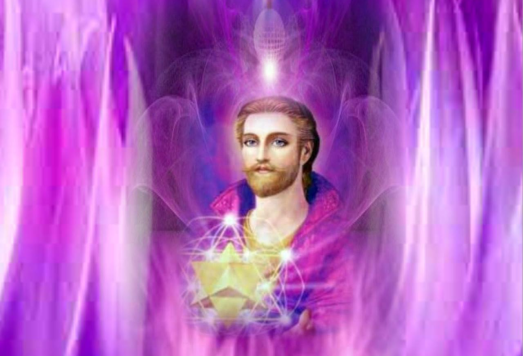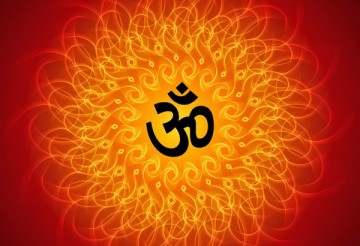Buddha was born around 600 B.C. as Siddhartha Gautama, a prince of the Sakya clan in the North-Eastern part of India in the foothills of the Himalayas.
The Four Noble Truths
The essence of Buddha’s teachings is condensed within the Four Noble Truths.
The Four Noble Truths are Suffering Exists, There Is a Cause of Suffering, There is Cessation of Suffering, There is a Means to Cease Suffering.

Suffering Exists
Buddha by researching deeply discovered that not only old age, disease and death, but life itself is suffering.
Birth, wishes, despair, frustrations, dejections, emotions and failures in desired attempts are all sources of suffering.
In short, all that is born of attachment is misery, desire for transitory, worldly objects leads to a long chain of suffering. All the sensuous enjoyments that human beings long for and strive to obtain are absolutely ephemeral, and they end in exhaustion and disappointment. Instead of being satisfied by obtaining wordly objects, one finds oneself in the grip of never-ending chain of dissatisfaction and increasing desire that is the root cause of manifold pain and misery.
There Is a Cause of Suffering
Buddha discovered the cause of suffering, which he described as a chain with no end and no beginning. Every cause has an effect, which becomes another cause, and thus there is an unbroken flow of effects and causes. This theory of causation is known as pratityasamatpada. According to this theory nothing is unconditional, the existence of everything depends upon certain conditions.
The series of cause and effect of suffering is described as the twelve-linked chain of causation called dvadasanidana.
The links in the chain are:
Avidya – ignorance
Samskaras – past impressions
Vijnana – initial consciousness
Namarupa – body/mind organism
Sadayatana – five cognitive senses and the mind
Sparsa – contact of senses with objects
Vedana – previous sense experience
Trsna – thirst to enjoy
Upadana – mental clinging
Bhava – will to become
Jati – birth
Jaramarana – old age and death
To explain the causal relationship one can go backwards starting from birth. If one was not born one would not be subject to the miserable conditions of life. Mental clinging to objects of the world is the main cause for the desire to be born.
Mental clinging is because humans have a thirst or craving to enjoy wordly objects, namely sights, sounds, tastes, smells, and touch. This desire comes from previous sense experiences.
This desire is not possible if there has not been contact of the senses with objects. The senses depend on body and mind, so the combined state of body and mind constitutes the perceptible being of man.
What is the cause of body/mind organism? That is consciousness. Consciousness descends and identifies itself with the embryonic body because it is under the influence of past impressions gathered in past lives. The impressions of past karma are responsible for driving consciousness to move the wheel of life.
What is the cause for these past impressions? Ignorance is the main cause of imprinting the impressions on the screen of consciousness.
According to Buddha, when a person forgets the law of change and the constant flow of consciousness (vijnana), he grasps things as though they were permanent and he becomes mentally attached to those external objects. This attachment, born of ignorance, causes all the pain and misery that one experiences, which are known as jaramarana (old age and death).
This twelve-fold cycles of cause and effect is completed and goes on until one learns how to break it. The process of disconnecting is explained in detail in Buddha’s exposition of the Four Noble Truths.
There is Cessation of Suffering
This third truth affirms that suffering in life can be voluntarily brought under one’s control.
All suffering is because of the twelve links of the causal chain, and their effective power results from one’s own involvement in them. If one keeps oneself away from the conditions that invite suffering, then there will not be suffering anymore. The state that is free from conditions is called nirvana.
The method of parching the seed of desire is the matter of the fourth Noble Truth.
Perfect control of the passions and constant contemplation of the Truth leads a person gradually to the state of perfection and wisdom where the sway of worldy attachment ceases. That is the state of Buddhatva (Buddha-hood) or nirvana. The one who is free of all the bondages is called a liberated one.
There is a Means to Cease Suffering
Buddha gave a complete and systematic guide for attaining the state of nirvana and his way of sadhana (path to liberation) consists of eight different stages.
- Right views (samyagdrsti). Avidya (ignorance) is the beginning in the flow of consequences.
In daily life, ignorance can be termed as misunderstanding or wrong views (mithyadrsti) regarding one’s views with the objects of the worlds.
Especially here right views is used in the sense of correct knowledge about the Four Noble Truths. Knowledge refers to awareness of imperfection and impermenance of the world and of a person’s relationship with it. - Right resolve (samyaksampkalpa). Right resolve means firm determination to perform one’s life in the light of truth, so in practicing this second rung in the eightfold path a student has to renounce all attachments to the world, giving up all feelings to others and desist of doing harm to anyone. This mental reformation calms down the mind’s fluctuations and makes the mind turn inward.
- Right speech (samyagvak). Right resolve must be coordinated with right speech which of all human behaviours is the highest vehicle of communication. Right resolve followed by right speech is a systematic way to practice nonviolence and truthfulness.
- Right conduct (samyakkarmanta). Right resolve coupled with right speech naturally leads one to the next stage; truth resolved in the mind and spoken by the tongue should be issued forth into action. Right conduct includes five vows (Pancasila): nonviolence, thruthfulness, nonstealing, nonsensuality (celibacy) and nonpossessiveness. These five vows should be practices with right resolve, right speech, and right action. These three limbs of the eightfold path to liberation are the foundation of the moral and ethical teaching of Buddha.
- Right livelihood (samyagajiva). Anyone with a body has bodily needs which should be provided otherwise it can create a great barrier in one’s external and internal growth. Therefore Buddha emphasizes right (honest) livelihood that does not harm or interfere with other’s lives and does not disturb social harmony.
- Right effort (samyagvyayama). Right effort is a constant endeavour to maintain moral as well as spiritual progress by banishing negative thoughts and assimilating positive ones. Constant effort to uproot old, negative thoughts, and to prevent new ones from forming is very important in the path of spirituality.
- Right mindfulness (samyaksmrti). Reviewing the first six steps it becomes apparent that each one has to be remembered with full-mindedness. All practical disciplines put an emphasis on mindfulness for higher attainment in wordly as well as eternal life, and this mindfulness should be practices in the light of right knowledge.
- Right meditation (samyaksamadhi). One who has his life in the first seven steps and gradually frees himself/herself from all passions and misunderstandings gains emotional maturity. He/she is prepared for the inner journey. This inner exploration of consciousness constitute the final step of the Eightfold Path. According to Buddha there are four stages of meditation: a. concentration of pure unruffled mind on reasoning and investigation regarding truth. b. In the second stage doubts and confusions are completely dispelled and the Student’s mind is perfectly established in the Four Noble Truths. Joy, peace, and internal tranquillity born of meditation are considered objects of meditation. c. By intense and deep meditation the student transcends even the joy of concentration and tranquillity and there is indifference to such joy. d. State of mind in which feeling of bodily existence and joy of equanimity also cease. State of nirvana -state of perfect wisdom.
Interestingly four truths of Sankhya as put in the Sankhyapravacanabhasya are very similar as the Four Noble Truths described in Buddhism.
Source: Seven Systems of Indian Philosophy – Pandit Rajmani Tigunait PhD









